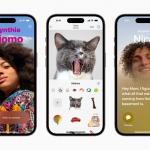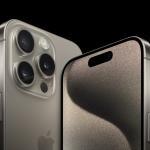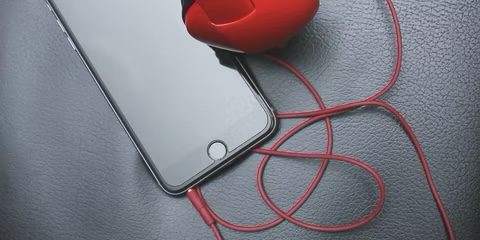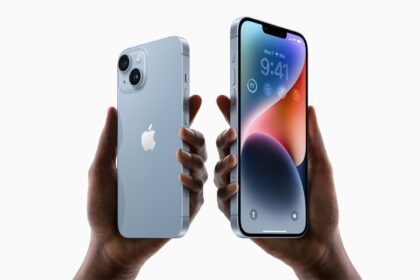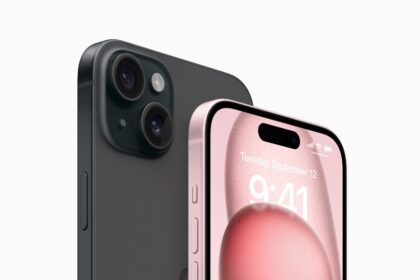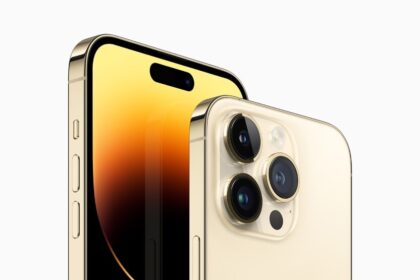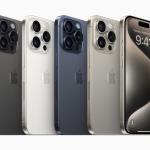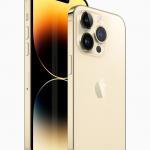The 3.5mm headphone jack can trace its roots back to 19th century switchboard operators. Over a century after its humble, low-tech beginnings, Apple killed it on its primary money-maker: the iPhone.
Apple killed the headphone jack on the iPhone in 2016 when it launched the iPhone 7. As is the case with most tech that Apple kills off, the move was initially criticized and mocked by consumers, industry watchers, and other companies.
Apple’s former Senior VP of Product Marketing, Phil Schiller, said it had to do with making space inside the iPhone for other components, and driving Apple’s goals of making audio better, and also said the move came down to "the courage to move on to do something new that betters all of us."
Every iPhone launched since the iPhone 7 doesn’t have a headphone jack, which means all iPhones launched since 2016 don’t feature the audio port. That also applies to Apple’s cheaper iPhone SE, which still includes the legacy Home button. For those who want the complete list, iPhones without a headphone jack include the iPhone 7 series, iPhone 8 series, iPhone X, iPhone XS series, iPhone XR, iPhone 11 series, iPhone 12 series, iPhone 13 series, iPhone 14 series, and iPhone 15 series. The iPhone SE 2 and iPhone SE 3 don’t feature a headphone jack either.
Initially, Apple shipped adapters in the box so that users could still plug wired headphones or other accessories into their devices. It soon stopped doing that.
Each iPhone 7 shipped with a dongle adapter, which Apple still sells.
Why Apple should bring back the headphone Jack
While it makes for some sleek-looking smartphones, I find the absence of a headphone jack on Apple iPhones a real shame. Some of the best wireless headphones and best wireless earbuds are great, but to me, they’ll never match their analog ancestors.
I long for the days of plug-and-play headphones, and not just for the sake of nostalgia. It’ll probably never happen, but my one wish for Apple is to please bring back the humble headphone jack. Consider these reasons the start of a new grassroots campaign to bring back headphone jack on iPhones.
Wireless earbuds aren’t truly the best choice for everyone
While Bluetooth has improved over the years, the best wireless headphones will never sound as good as wired ones. A Bluetooth connection to headphones is another degree of separation from the original audio and another level of sound processing we don’t need. An analog connection will always trump a digital signal in sound quality. Bluetooth headsets are great in a lot of ways, but they can’t beat wired headphones when it comes to sound quality, since we don’t have the capacity to listen to lossless audio over Bluetooth yet. One could argue that wireless earbuds are better because they’re more convenient, you don’t have to deal with tangled cables, and there’s no wire getting in your way while you’re walking around or fiddling with your phone.
But consider for a moment that you could theoretically use wired headphones until they start to disintegrate in your hands, while Bluetooth headphones have a much shorter lifespan because of the battery inside the headphones. According to Wirecutter, this can be as little as two years, or a few more, depending on how often you use them and charge them. Plus, what I find is a major inconvenience — having to charge my earbuds.
What if you forget to charge them before going for a journey? Plus, they’re so easy to lose or break. What if you lose one earbud because there’s nothing tethering it to the other one? What if one falls out and breaks? Not only are they easier to lose or break, but replacing wireless earbuds is more expensive. Even the best Airpod deals rarely drop below $100 for entry-level models while Apple’s wired Earpods are around $20. That’s a big difference. If you do have wireless earbuds or headphones, you better look after them.
And while true wireless earbuds are convenient, that convenience comes at a cost, literally. Like I said before, wireless earbuds and headphones don’t last a long time, whereas wired earbuds and headphones can last for decades. Bluetooth devices inevitably have their battery capacity reduced after repeated charges, and because you can’t just change the battery on any Bluetooth device, you will inevitably have to buy another pair of earbuds.
Another thing is pairing issues. I always have a little moment of panic listening to music on wireless earbuds in public spaces that it just won’t connect and the whole world will know I’m listening to Avril Lavigne. That’s not to mention seemingly random occasions where one headphone will connect while the other stays silent and you have to disconnect and reconnect again.
For those reasons, along with the audio quality reasons, I personally believe Apple should bring back the headphone jack.
Environmental concerns
Having to purchase wireless earbuds often means you’re buying a piece of tech using rare earth elements, the over-extraction of which is rampant, which adds tons of CO2 to our earth’s atmosphere, and contaminates water and soil. Many of these minerals also come from conflict zones, leading to even more ethical issues when you are being forced to over-consume technology that is essentially made to be disposable.
When you have to repurchase wireless earbuds over and over again because the battery keeps depleting, you’re not only creating more demand for products using rare earth minerals from potential conflict zones that pollute the planet, but you’re also creating more e-waste, some of which is recycled, but certainly not all. Companies like Apple claim to care about the environment, but contribute to these wasteful cycles with practices like removing headphone jacks from their phones.
Unintended consequences
Since Apple Music made the change to add lossless listening, Apple users suddenly find themselves in a strange situation: If they’ve bought the AirPods Max, lossless audio streaming is still out of reach for them unless they use a specialized cable and a dongle—and even then there’s no guarantee. I say that because the signal path of the AirPods Max relies on a couple conversions from digital to analog and back again in order to work, and it’s possible (though unlikely) that this may result in some errors. Something that would be easily avoided if there was a headphone jack available.
No matter how you adjust the settings, a physical connection is needed for Apple Music’s lossless audio.
Because Bluetooth isn’t where it needs to be in order to make the most of lossless audio streaming, there’s little benefit to any Apple ecosystem user to use Apple Music’s lossless feature. Neither the AirPods nor AirPods Pro are capable of getting the most out of this feature of Apple Music; among the Apple audio panoply, only wired Beats products and the AirPods Max with extra accessories can. In order to get the best, cheapest setup to use Apple Music’s lossless streaming, you’re better off with an Android phone and third-party wired headphones. In a major way, Apple’s audio products don’t “just work” when used together.
However, it may spur at least some backlash to get Apple moving in the right direction if it wants to hold onto all those new subscribers jumping ship from Tidal and other streaming services. A headphone jack is a tried, true, and cheap way to get the best results possible. From a business perspective, it may be the best way to appease subscribers to Apple Music who are frustrated that they can’t reap the benefits of their lossless audio streaming.
It’s a simple and cheap solution for companies and consumers to implement
It seems weird to extol the virtues of a piece of nearly 140-year-old technology in this day and age, but the reason why it’s persisted this long is that… it works. It’s a solved issue: not only is a TRS (or TRRS) plug cheap, but it’s durable, small, and high quality. It can support inexpensive headphones, and it can support the best headphones–all with one universal standard. Not only that, but it’s an easy way to enable the use of microphones as well. It’s a fantastically versatile piece of tech that hasn’t really been changed all that much since the plug was reduced in size to 3.5mm in the 1950s.
Obviously, a headphone jack isn’t the only way you can listen to music. Bluetooth headphones exist, and they work well for most people. But the problem is: they don’t work well for _all_people. Audiophiles probably aren’t too keen on being unable to listen to high-bitrate files, and there’s no shortage of reasons why you wouldn’t want to deal with the added hassles of wireless tech… Which is why smartphone companies have used both in tandem for so long–it offers the pickiest listeners quality that Bluetooth can’t currently touch, while enabling users who want to ditch the cable. There’s almost no reason for Apple not to hinclude both on iPhones, especially when the cost to manufacture is so cheap.
Given that so many people have decided that the smartphone is the heir to the portable MP3 player, consumers’ buying habits when it comes to iPhones are extremely important. And when it comes to which types of cans consumers prefer, wired headphones absolutely _crush _Bluetooth headsets in gross sales, despite how badly tech blogs misread this study that claims Bluetooth overtook wired headphones in 2016. The issue is that people lose sight of the gross figures in favor of the dollar sales figure. For those keeping score at home: before the arrival of the AirPods, wired headphones were outselling Bluetooth units with 83% of the total units to Bluetooth’s 17% share.
Considering that we’re talking about a base of consumers that probably don’t buy headphones every single year–especially if they spent more than $100 on their last pair–it doesn’t seem likely that 83% is an accurate assessment of how many people use the good ol’ analog plug as their primary vehicle for sweet, sweet music. That figure is probably higher, and wired headphones won’t be in the minority for a long, long time.
There’s a lot more wired headsets than wireless ones out there.
So why on Earth would Apple deign to alienate such an enormous segment of its potential audience? Well, if that data is any indication: it’s all about the money.
Why Apple shouldn’t bring back the headphone jack
There are so many reasons why going wireless is simply the better choice. Here’s a quick look at a few of those reasons.
No More Tangled Mess
Previously, tangled earphones were such a prevalent topic that it had even become a meme of sorts. It seemed that they would immediately get entangled only seconds after putting a pair of wired headphones in your pocket.
So, opting for a wireless alternative means you don’t have to invest time and effort fumbling with and untangling a pair of headphones. Cables are also a primary reason why your headphones might break frequently.
Technology Is Going Wireless
Most tech companies are pushing for a wireless approach. You can connect most devices wireless via Bluetooth and even charge your phone wirelessly on a dock. The freedom of movement and ease of use that comes with wireless alternatives are fantastic.
There’s nothing quite like shuffling through a playlist and moving through your home without having to carry your phone around with you. Quality also isn’t much of a concern, as there are plenty of ways to improve your headphone audio quality, whether they’re wired or wireless.
More Internal Space for Components
While an integrated 3.5mm headphone jack might not seem to take up much internal space on the iPhone, it still significantly impacts how components fit inside. Removing the jack makes accommodating a larger battery, storage drive, and other components easier.
In many cases, the jack is replaced with an additional phone speaker. This makes it much easier to design devices that provide stereo audio when used in landscape mode.
Other Phone Companies Are Doing the Same
Apple isn’t the only company building towards a wireless future. Apple’s competitors wasted no time mocking the company for removing the headphone jack, even running ads poking fun at the decision. Eventually, however, most other major Apple rivals ended up copying the company’s move.
Samsung is a frequent Apple-mocker, and published multiple ads criticizing the removal of the headphone jack on the iPhone. However, Samsung eventually followed suit and — starting with the Galaxy S20 — killed the 3.5mm jack on its own flagship devices.
More than that, Samsung tried to rewrite history by sneakily removing the ads mocking Apple’s design choice.
Google has similarly poked fun at the headphone jack’s removal on the iPhone. A parody of Jony Ive’s design videos touted that the Google Pixel 5a still had a headphone jack.
However, a year after releasing the Google Pixel 5a — and the Apple-mocking video — Google eventually fell in line and removed the headphone jack from its Google Pixel 6a.
It’s a similar story across the Android landscape. While not all companies openly ridiculed Apple for removing the headphone jack, the majority of major smartphone brands have since followed suit.
Why most new phones are ditching the headphone jack?
What’s less clear is why other companies are ditching the headphone jack. Sure, there’s always the idea that cost is a main driver here, but that’s not enough to explain why so many Android OEMs have spurned the world’s most popular vehicle for audio transmission.
I can think of two immediate benefits that might tempt a big company–let’s say Samsung–when they finally move away from the connector. Namely, it helps them lock people into using their audio products, and it saves them money on manufacturing. When everyone else is doing it, it’s easy to write off complaints by your users and marginalize their opinions, right?


